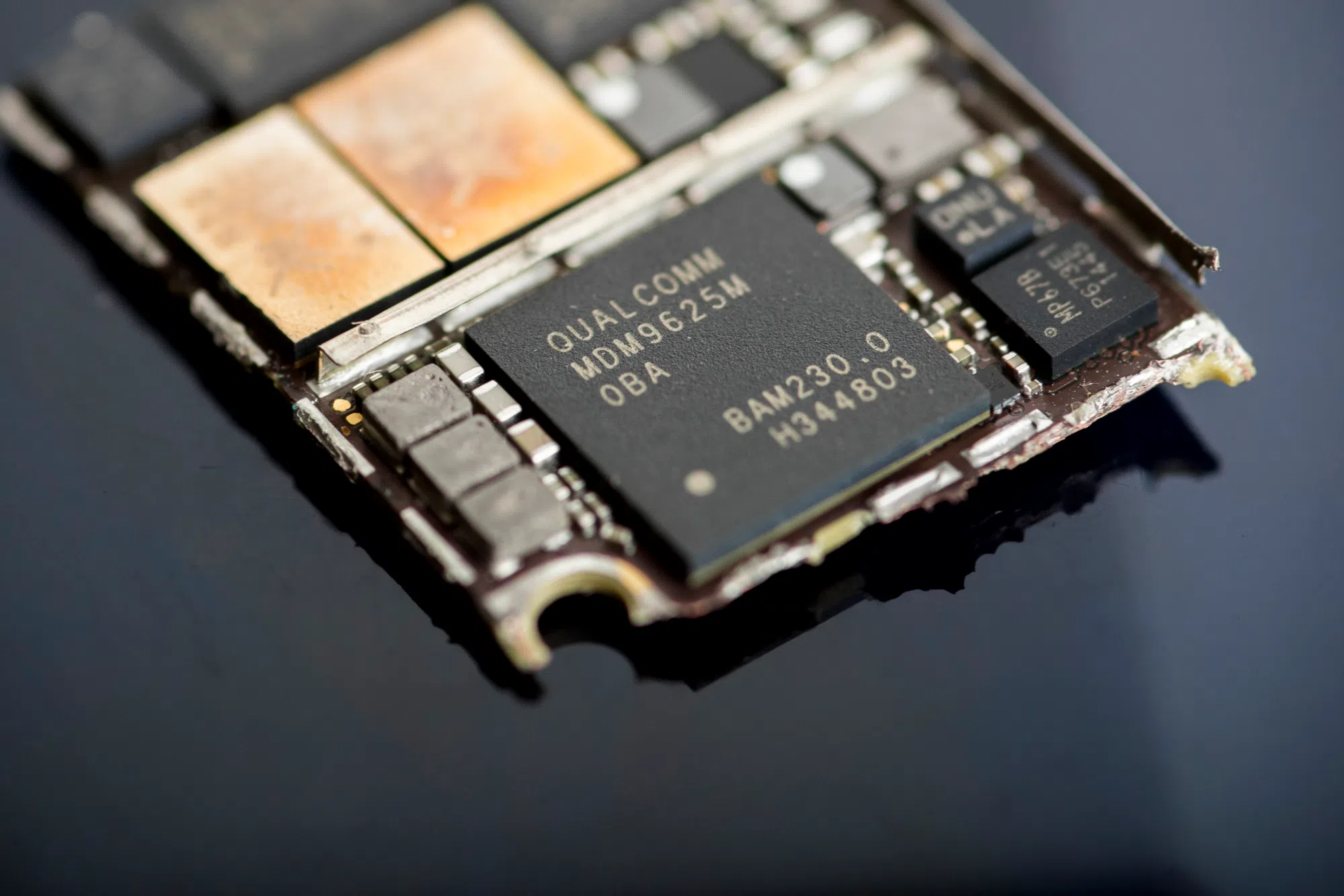APPLE is preparing to finally bring one of its most ambitious projects to market: a series of cellular modem chips that will replace components from longtime partner – and adversary – Qualcomm.
More than half a decade in the making, Apple’s in-house modem system will debut next spring, according to sources familiar with the matter. The technology is slated to be part of the iPhone SE, the company’s entry-level smartphone, which will be updated next year for the first time since 2022.
A modem is a critical piece of any mobile phone, letting the device connect to cell towers in order to make calls and link up with the internet. Apple’s first version of the component will be followed by further generations that become increasingly more advanced. The company hopes to ultimately overtake Qualcomm’s technology by 2027, said the sources, who asked not to be identified because the project is confidential.
Apple’s modem has been a long time coming. When the company set out to build the chip, it originally hoped to bring it to market as early as 2021. To jump-start the effort, the company invested billions of US dollars to set up testing and engineering labs around the world. It also spent about US$1 billion to acquire Intel’s modem group and millions more hiring engineers from other silicon companies.
Over the years, Apple encountered setback after setback. Early prototypes were too large, ran too hot and were not power-efficient enough. There also were concerns internally that Apple was simply developing a modem to get back at Qualcomm, following a legal battle over licensing payments that did not go the iPhone maker’s way.
But after adjusting development practices, reorganising management and hiring scores of new engineers from Qualcomm itself, Apple is now confident that its modem plan will work, the sources said. It would be a major win for the company’s hardware technologies team, which is run by senior vice-president Johny Srouji.
BT in your inbox
Start and end each day with the latest news stories and analyses delivered straight to your inbox.
Representatives for Apple and Qualcomm declined to comment.
Qualcomm has long been preparing for Apple to switch away from its modems, but the company still receives more than 20 per cent of its revenue from the iPhone maker, according to data compiled by Bloomberg. Its stock fell as much as 2 per cent to a session low after Bloomberg News reported on Apple’s plans on Friday.
Shares of Qorvo, another component supplier at risk of being replaced by Apple’s modem efforts, declined as much as 6 per cent. Apple shares were little changed as 12.52 pm in New York.
When the iPhone SE debuts in a few months, it will have major new features, including Apple Intelligence and the edge-to-edge screen design already used in more upscale models. But its most impressive breakthrough will not be visible to consumers: the in-house modem, code-named Sinope.
For now, the modem will not be used in Apple’s higher-end products. It’s set to come to a new mid-tier iPhone later next year, code-named D23, that features a far-thinner design than current models. The chip will also start rolling out as early as 2025 in Apple’s lower-end iPads.
In preparation for the iPhone SE, Cupertino, California-based Apple has been secretly testing the new modem on hundreds of devices deployed to employees globally. And it has been doing quality assurance testing with its carrier partners around the world.
The company decided to start with lower-end products in part because a modem is a risky endeavour: If it does not work properly, customers will suffer dropped calls and missed notifications. There’s little tolerance for that on Apple’s highest-end, US$1,000-plus iPhones.
Moreover, Sinope is not as advanced as the latest modems from San Diego-based Qualcomm, meaning the first Apple modem is a downgrade from the component currently in the iPhone 16 Pro.
Unlike today’s high-end Qualcomm parts, the Sinope modem will not support mmWave, a type of 5G technology used by Verizon Wireless and other carriers, primarily in major cities, that can theoretically handle download speeds of as much as 10 gigabits per second. Instead, the Apple component will rely on the Sub-6 standard, a more prevalent technology used by the current iPhone SE.
The first Apple modem will also only support four-carrier aggregation, a technology that combines bands from several wireless providers simultaneously to increase network capacity and speeds. Modems from Qualcomm can support six or more carriers at the same time.
In lab tests, the first Apple modem caps out at download speeds of about four gigabits per second, less than the top speeds offered by non-mmWave Qualcomm modems, the sources said. Real world speeds for both types of modems are typically far less, meaning that customers might not notice a difference in day-to-day use.
In any case, the first Apple modem will have several other advantages that the company believes will give it an edge with consumers. For one, it will be tightly integrated with Apple-designed main processors to use less power, scan for cellular service more efficiently and better support on-device features for connecting to satellite networks.
The Apple modem will also be able to offer better performance relative to SAR, or specific absorption rate, limits because it will be managed intelligently via the main processor, the sources said. SAR is a measure of the radio frequency absorbed by the body, and government agencies such as the US Federal Communications Commission regulate acceptable levels.
Apple is also planning to include support for DSDS, or dual SIM dual standby. That allows data connections on both SIM cards when a user is using two phone numbers for their device.
The new modem will be produced by Taiwan Semiconductor Manufacturing Company, the manufacturer of the main processors inside the iPhone, iPad, Mac and other Apple devices.
To help build its modem, Apple rapidly expanded its office space in San Diego and other parts of Southern California, looking to poach talent from Qualcomm. Executives involved in the modem’s development believe that some of the resources and talent acquired from Intel in 2019 were inadequate, and that hiring from Qualcomm helped Apple overcome earlier setbacks.
Some of the development work for the modems has also taken place in Cupertino and offices in Munich.
The modem will work with another new Apple component: a radio frequency front-end system, or RFFE, called Carpo that helps devices connect to cellular networks.
That part will also take away business from Qualcomm, and could eventually affect Qorvo as well. Today, Apple uses Skyworks Solutions and Broadcom for so-called RF filters – relationships that will continue. Apple and Broadcom extended their supply agreement in 2023.
Shares of Broadcom gained as much as 4.9 per cent, while Skyworks climbed up to 2.6 per cent.
In 2026, Apple looks to get closer to Qualcomm’s capabilities with its second-generation modem, which will start appearing in higher-end products. This chip, Ganymede, is expected to go into the iPhone 18 line that year, as well as upscale iPads by 2027
The big difference is that Ganymede will catch up to current Qualcomm modems by adding support for mmWave, download speeds of 6 gigabits per second, six-carrier aggregation when using Sub-6, and eight-carrier aggregation when using mmWave.
In 2027, Apple aims to roll out its third modem, code-named Prometheus. The company hopes to top Qualcomm with that component’s performance and artificial intelligence features by that point. It will also build in support for next-generation satellite networks.
Further out, Apple is discussing merging its modem and main processor into a single component. BLOOMBERG




